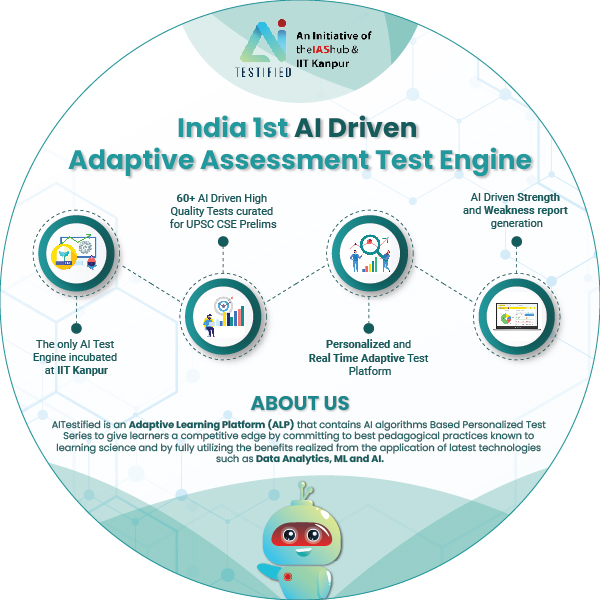Q. What are the major cropping patterns practised in India? Highlighting the existing issues with the state of cropping in India, suggest solutions to counter those issues. (Answer in 150 words)
04 Oct, 2022
GS III
Daily Answer Writing 2022-23 ( Upgrade)
Modal Answer
Modal Answer
Cropping pattern refers to the proportion of area under different crops, changes in this distribution over a period of time, and factors determining this change in distribution.
With a net sown area of 45% and cropping intensity at 150%, multiplicity of cropping systems has been one of the main features of Indian agriculture.
Major cropping patterns in India
- Monocropping: growing same crop in the same area every growing season; uses specialised farm equipment.
- Wheat is mono-cropped in Punjab, Haryana
- Mixed cropping: growing two or more crops on same land, simultaneously; Eg. Wheat & gram in J&K and Himachal.
- Intercropping: growing more than one crop on the same field at the same time in a definite row pattern.
- g. row, strip, relay intercropping - Garlic- tomato and rice-onion system.
- Crop rotation: growing different crops on same land in planned succession; focus on improving soil fertility.
- Eg. Legumes after wheat
- Shifting cultivation: growing crops for a period of time and them abandoning it for allowing regeneration.
- g. Jhum cultivation in North East India.
Issues with state of cropping in India
- Cereal-centric: 50% of net sown area comprises cereals (esp. rice, wheat), with just 15% under pulses, due to better MSP, lesser risk, easier access to inputs etc.
- Shrinking area under Nutri- Cereals like ragi, bajra, maize, millets etc (15% in 2007-08 to 10% in 2018-19) despite shift in consumption patterns to ‘healthy foods’.
- Land Fragmentation: 65% of households have less than one hectare of land è poor scope for
- Virtual Water export: Skewed focus on water guzzling crops like rice, wheat, sugarcane etc despite high irrigation cost (70% of input cost) & water scarcity.
- Input-intensive: high use of fertiliser and pesticides. Eg. Cancer instances in Punjab due to pesticide use.
- Impact of Climate change: Economic survey estimated reduced crop yields of 15-17% due to global warming.
- Agriculture distress: >22% farmer below poverty line, feminisation of agriculture, farmer suicides etc.
Solutions: è Diversification + growing “more from less”
- Rainbow Revolution: Encouraging Crop diversification for Eg. Technology mission for pulses/oilseeds & extending MSP, inputs, technology, & credit benefits to other crops
- Input use efficiency: use of micro irrigation, vertical farming, fertigation, mulching, crop rotation etc.
- Regulate demand: increasing the demand for nutritious crops (millets), in line with PM’s LiFE initiative.
- Nature based solutions (NBS): mitigating impacts of climate change. Eg. Integrated farming systems.
- R&D: HYV & drought resistant seeds – g. Sahbhagi dhan
Thus, India needs to transform its cropping systems to help agriculture move from ensuring food security to ‘actively achieving nutritional and ecological security’.
Please login to upload your copy.
Uploaded Copies
No copies found.

